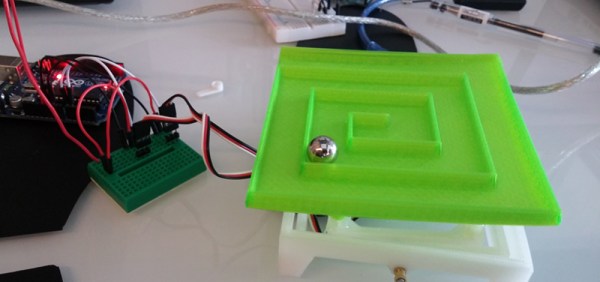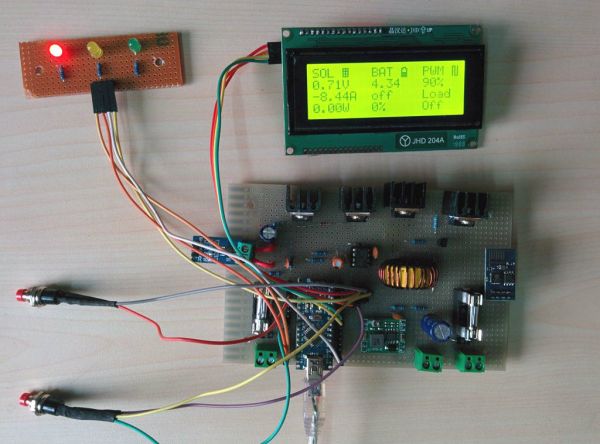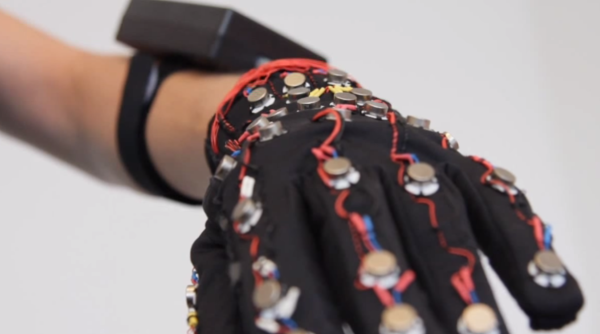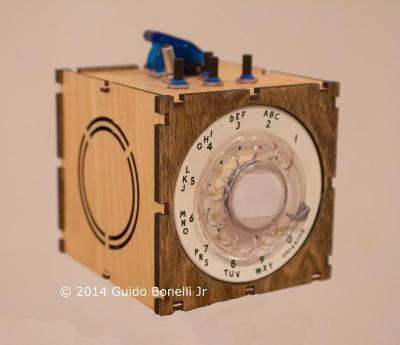[Daniel], [Gal] and [Maxim] attended a hackathon last weekend – Brainihack 2015 – that focused on neuroscience-themed builds in a day and a half long build off. The trio are communications systems engineering and computer science students with no background in neuroscience whatsoever. You can’t build an FMRI in a day and a half, so they ended up winning the best project in the open source category with a brain-controlled labyrinth game.
The labyrinth itself is entirely 3D printed and much, much simpler than the usual, ‘wooden maze with holes’ that’s generally associated with labyrinth puzzles. It’s really just a plastic spiral for a ball to follow. There’s a reason for this simplicity. The team is using EEG to detect brain waves and move the labyrinth on the X and Y axes.
The team is using OpenBCI for the interface between their brains and a pair of servos. This is actually an interesting piece of tech; unlike a few toys like the NeuroSky MindWave and the Star Wars Force Trainer, the OpenBCI gives you eight input channels that attach to anywhere on the scalp. The team used these inputs to measure Alpha waves and Steady State Visually Evoked Potential to control the pair of servos on the labyrinth frame.
It’s a great build, a wonderful demonstration of a device that outputs real EEG signals, and the team on a prize. What’s not to like?


















